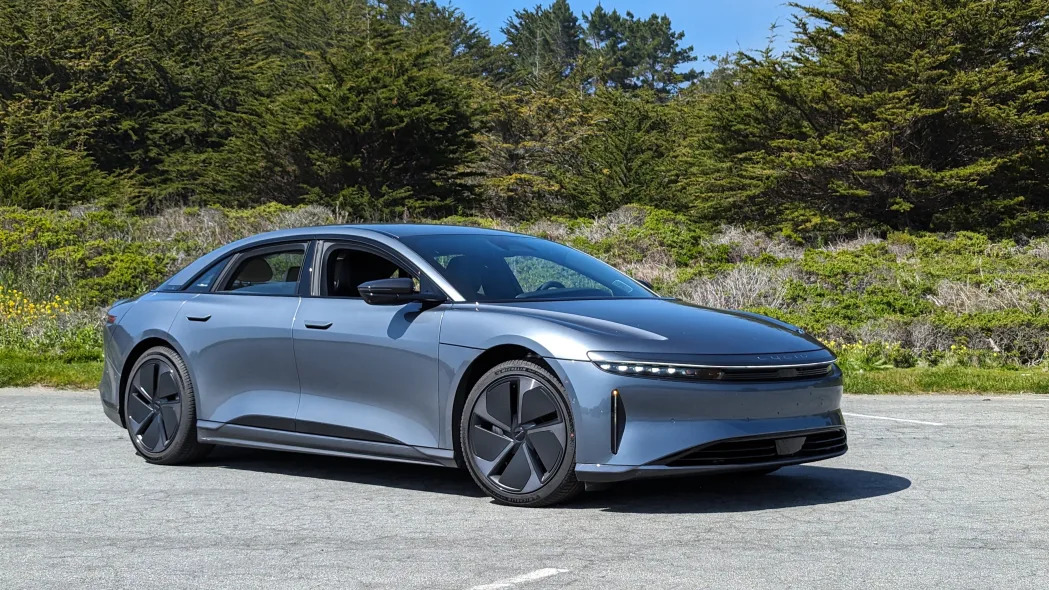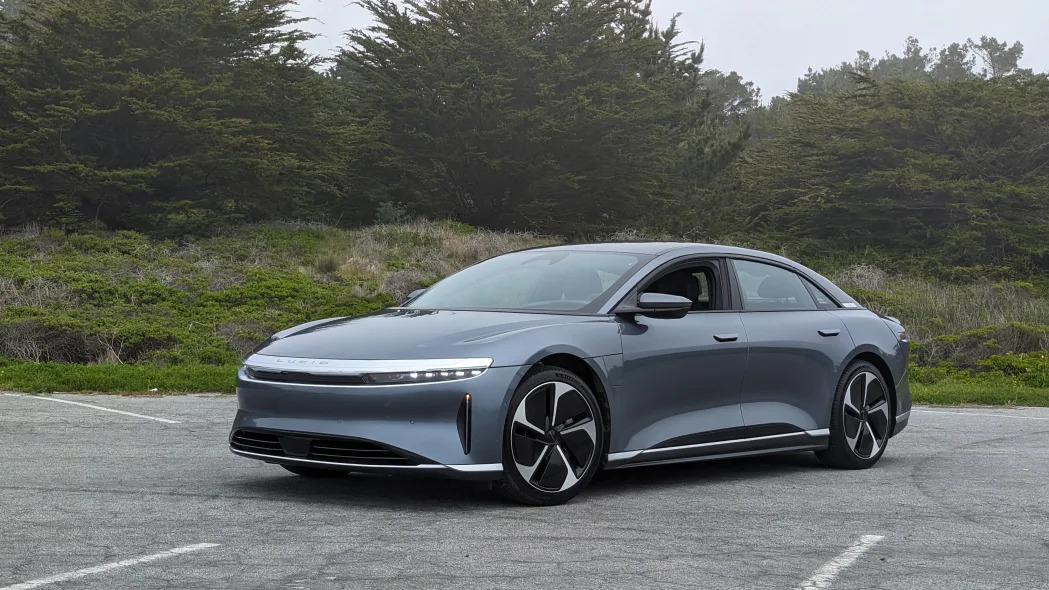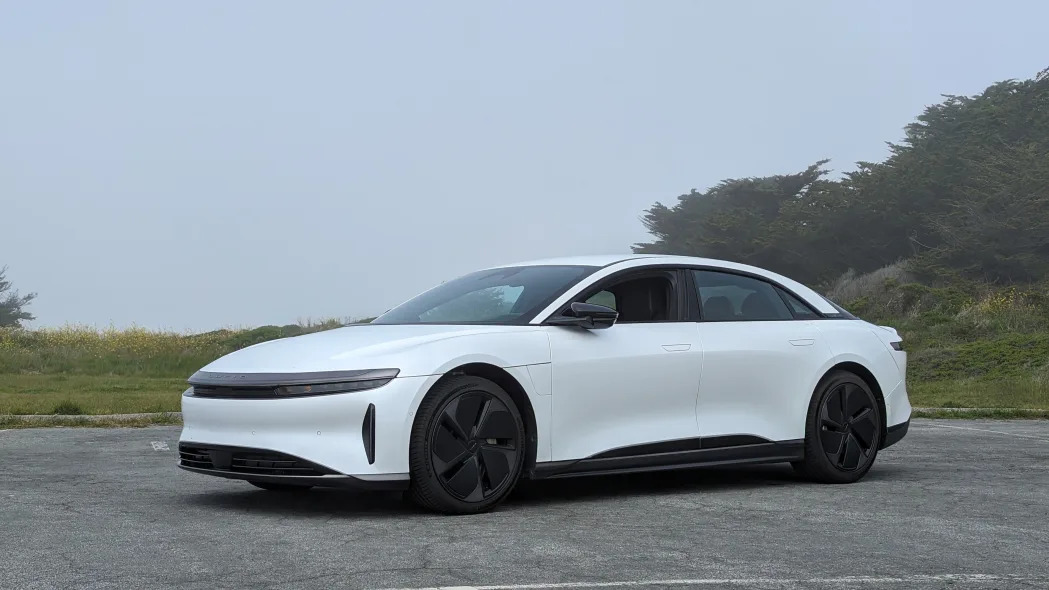NEWARK, Calif. – All four versions of the 2024 Lucid Air are in front of me, from the entry-level Pure to the missile-like Sapphire. I will ride them all in one day on some of the Bay Area’s most beautiful mountain roads. There is no stop-and-go for city or highway travel involved. No, Lucid wants to showcase the dynamics of its Air range on roads that seem more suited to Porsches, BMW M cars and the like. The Air isn’t a two-door sports car on the outside, but it quickly becomes clear that every single version of this electric luxury sports sedan belongs in this field.
Of course, it makes sense that the Air works best on roads that road engineers have approved for their work — I’m starting just a short 20-mile drive from the company’s headquarters in Newark, Calif. While visiting Lucid’s headquarters the night before, CEO Peter Rawlinson went on and on about how and why Lucid’s electric power generation technology makes the Air an efficient and powerful EV. It’s impossible not to be impressed by what Lucid has designed to keep its cars in motion, further evidenced by a prestigious car company like Aston Martin signing a deal to use Lucid’s electric motors and battery systems in the future. And if you didn’t notice, Formula E uses Lucid battery and motor technology in its latest generation race cars today. You know what they say: Win on Sunday, sell on Monday … and now that I’ve tried road car products, there’s a good reason why a company like Aston or a racing series like Formula E has been considered.
Lucid Air Sapphire
Sapphire is silent violence. It’s also what the Tesla Model S Plaid aspires to be. Lucid and Tesla boast 0-60 times in under 2 seconds, but there’s a $160,000 gulf between their starting prices. Only when you’ve driven both do you understand why the price difference is so great. Lucid’s Sapphire is a complete, high-performance luxury car from trunk to stern, while the Plaid feels like a half-hearted muscle car; One trick pony from yesterday.
To keep things straight for the petrol-powered gearheads among us, the Sapphire is to the Air lineup what the M5 Competition is to the 5 Series lineup. It’s the whole enchilada. Its multi-suspension is different from that of other Air models, and results in a car with a chassis that can handle a lot of its power. Which, by the way, is 1,234 horses. Kind of. Rawlinson said that was a completely made-up number (because 1-2-3-4 sounded good) and that the real figure was much higher. I have no doubts after driving it.
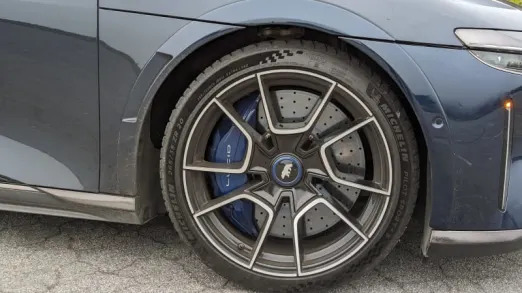
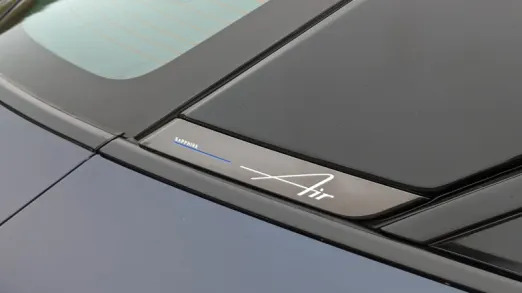
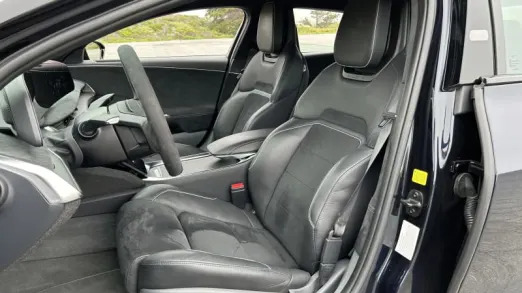

The Sapphire chassis is impossible to slide on a twisty road. It flies through every corner with such ease that you’ll be surprised how a big, heavy EV manages it. Michelin Pilot Sport 4S tires specially designed for the Sapphire at all four corners, giving it plenty of grip. Its carbon ceramic brakes squeal every time I lay down after a quick beat. It goes down quickly without any drama or notable dives. At the same time, Plaid’s suspension isn’t so car-friendly that the tires will rub against the wheel wells if you build up enough Gs. The brakes are a joke for how fast it can accelerate, and while its low center of gravity helps, you can tell that its base isn’t up to serious mountain road work, let alone track work.
The Sapphire’s interior completes the performance package, too, as it’s packed with comfortable, sporty buckets that can help you on the inside when making use of the car’s impressive capabilities. I haven’t said anything about the Sapphire’s acceleration so far, and that’s because in some ways, it’s the most important aspect of what makes this car so special. Yes, it will leave anyone in awe of how quickly it accelerates to illegal speeds, but after driving it for an hour, I was already accepting and used to the impulse. EVs are fast, but that one party trick is easy to get bored of. Thanks to Sapphire, you’ll always have a great time moving forward, no launch control needed.
Lucid Air Grand Touring
The next most powerful Air Descent in the lineup brings me to the Grand Touring, a four-door sedan that features 819 horses from a twin-engine powertrain. It’s still pretty fast when you’re asleep, but the Grand Touring doesn’t take performance as seriously as the Sapphire does. That said, to follow the Model S Plaid comparison, the Grand Touring is still the more powerful package in every way.
Instead of doing a high attack, though, I hit it again to take out the internal but simple Air stuff. The funky-shaped screens that stretch across the dash may look dominating in the photos, but they’re a bit underwhelming compared to Mercedes’ Hyperscreen and the spread of passenger-side screens. There are still hard buttons to adjust features like temperature control, content volume and song search. However, neither the main scroll wheel nor the steering wheel for volume control are particularly useful, so you have to spend a lot of time scrolling to get any sort of noticeable volume adjustment.

The seats, while not as serious as the Sapphire’s buckets, hold me in place with ample support and superior comfort, but Lucid should be commended for keeping the seat as low as it is for a more natural sport sedan feel. Most EVs force you to sit up awkwardly due to the battery pack requiring space under the floor, but the Air doesn’t bother here.
As for how it handles it, the short answer is skillfully and confidently. That said, it’s not the best of the rest when it comes to the Air range south of Sapphire. Lucid tells me that it learned a lot about suspension and stability control setup while developing the Sapphire, and while it applies that learning to the entry-level Pure, neither the Touring nor the Grand Touring have those updates yet. When running back-to-back, dynamic differences are impossible to ignore.
Lucid Air Fresh
Of all the Air versions available, the Pure is the one I would go home with. From a performance and value perspective, it’s the best of the bunch. It’s also slower, but in the Air range, that doesn’t mean much. The single-engine, rear-drive Pure goes 0-60 in 4.5 seconds and is rated for 419 miles on a full charge, which is more than enough on both counts. Its speed is very fast, even when charging up a steep mountain path. Frankly, it’s exactly the amount of thrust you want on a twisty road. All other versions of the Air are so fast that your time spent fully on the throttle is minimal, forcing you to measure power with restraint. It’s hard to blame the car for being so fast, but I can’t deny that I had more fun in the Safi which allowed me to get a more natural rhythm. Instead of hard braking followed by measured taps, you can just use the braking power to slow yourself down before the corner and slam it down on the exit.
And I mean hammer down, because the stability control system (ESC) in the Safi is a joy. The Safi and Sapphire use Lucid’s new in-house designed ESC, while the Touring and Grand Touring use an external system. The difference is huge, as the rear wheels of the Pure can’t be messed with, and you’d never know the electronics are helping. Engineers tell me its internal ESC allowed for more granular control and also allowed the system to react much faster than the previous one. Where you’d find awkwardness or hesitation in the Touring or Grand Touring, it’s absent in the Pure. It’s even more surprising when you consider that the Safi only sends its power (430 horsepower!) to the rear wheels while all other Airs have the benefit of all-wheel drive. That Lucid can make the driver feel like all 430 horses are being put to the ground 100% of the time without wheel slip or feeling a loss of power is just magic.
Then again, you can relax the ESC and get the rear end to stick out a bit if you purposely overdrive, as any decent rear-wheel drive sports sedan allows. The lack of a front engine is a big advantage for the overall balance of the car, as it is more eager to turn into corners. Plus, its smaller battery pack helps it shed pounds and feel faster overall. The rear is happy to even give a touch of spin when you sink into the brakes. It’s not the kind of supercharger that made the old Honda fun out back, but it’s something you’ll notice when you push it.

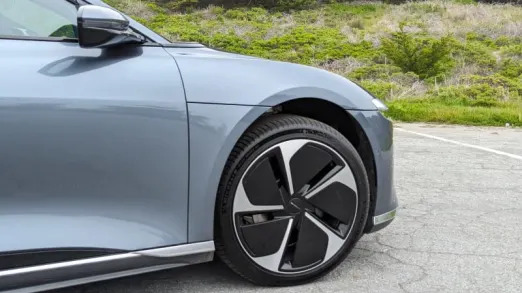
Another revelation that is immediately apparent when moving from the Grand Touring to the Pure is how the handling has improved. Not only is the weight more natural, but just going to the lock is smoother and more refined. None of the Airs added to the steering wheel, but the song played for Safi is undoubtedly the most satisfying. This new steering system, suspension tuning and stability control can’t come to the Grand Touring and Touring soon enough, because it all adds up to a car that’s perfect for every situation.
It’s just icing on the cake that the Safi also happens to be the cheapest of all the Airs, starting at just $71,475. You’ll need to spend a little more to get the most out of its improved handling — the $1,750 20-inch wheel package brings wide wheels shod with Michelin Pilot Sport EV tires (the way I tested it). But that still costs the car $73,225, and at that price, it feels like an absolute steal compared to its EV rivals.
Lucid Air Touring
I finish with what was the first Air I rode that day, the Middling Touring model. But again, middling needs to be put into perspective, because this sedan still has 620 horses and goes 0-60 mph in just 3.4 seconds. You get this extra performance — and all-weather all-wheel drive — for just $8,000 more than the Pure. That seems pretty good when the gain is almost 200 horsepower, but because of all the improvements applied to the Pure, I still think the RWD Air is the best driver’s car.
If you were in the mood for the extra power this Touring offers, however, know that it’s still a great sport sedan. Its variable dampers and steel springs (no Airs have air suspension, despite the Gravity’s exposure to that feature) make for a pleasing balance of ride and handling. From the Sapphire to this Touring model, they would all work as good and capable daily drivers.

I should also mention that the only technical snag of the day came from this Touring model. Apple CarPlay would not work despite multiple attempts to connect and technical support from Lucid. All three other Airs connected to CarPlay instantly and seamlessly, but these kinds of nuts are the types we’ve seen in other Air test cars. They aren’t deal breakers, but they are growing pains for a new car company.
How the entire Aircraft fleet performs at this point is also interesting for a brand new car company. You can tell that it is designed and developed by a team that has experience and knows what it takes to create a competitive product. And not only is it competitive from a spec, technology and design perspective, but the Air range is designed with the driving enthusiast in mind. That I can blast down many mountain roads in each version and have the balls to do so is the mark of a good driver’s car with the right specs – like the BMW 5 Series or the Cadillac CT5, each version will please the driver. in their own, unique ways. That’s what the Air brings to the table, and as luck would have it, the more affordable Pure model is the best performer. How many other sport sedans can you say that about?
Related video:


